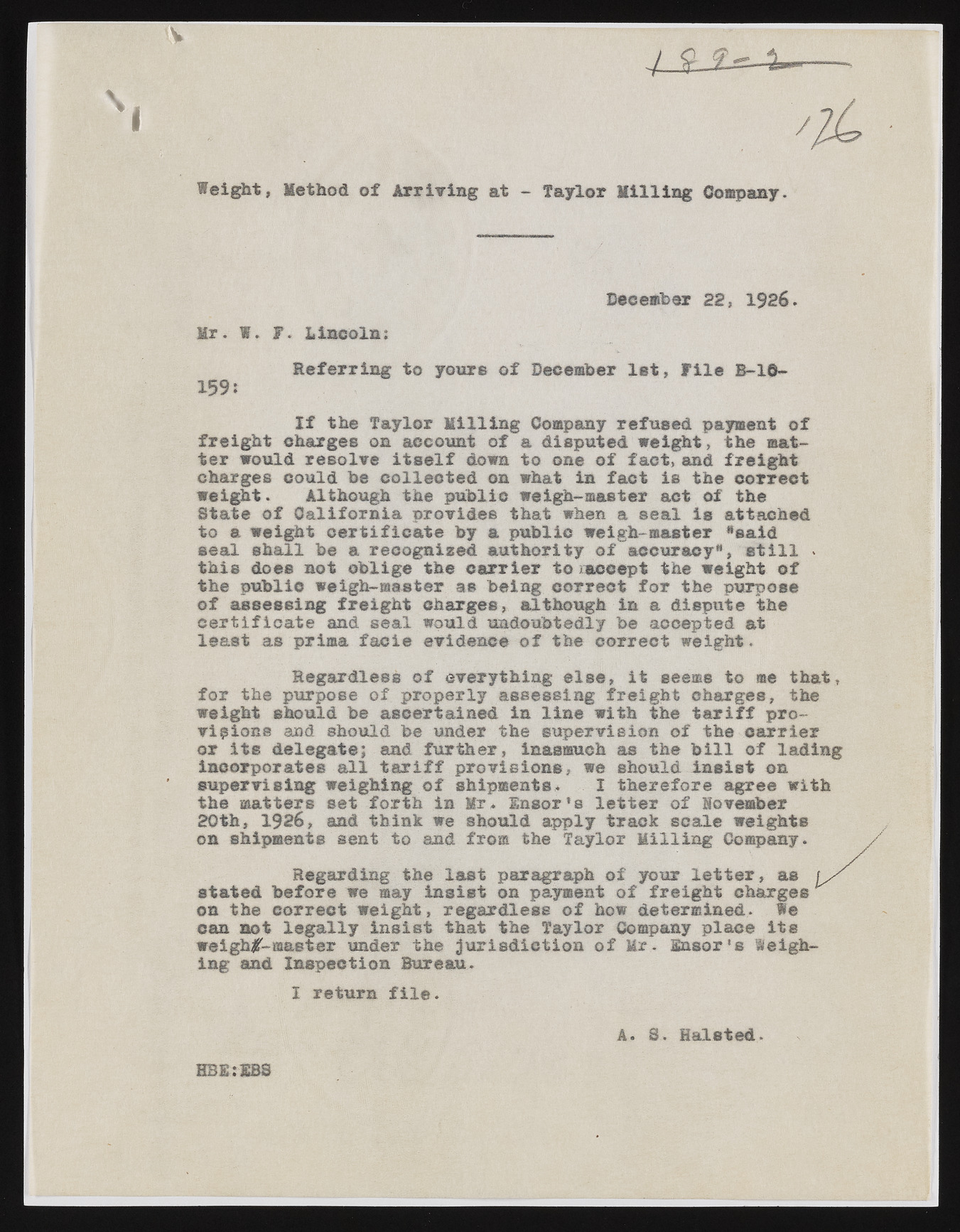Copyright & Fair-use Agreement
UNLV Special Collections provides copies of materials to facilitate private study, scholarship, or research. Material not in the public domain may be used according to fair use of copyrighted materials as defined by copyright law. Please cite us.
Please note that UNLV may not own the copyright to these materials and cannot provide permission to publish or distribute materials when UNLV is not the copyright holder. The user is solely responsible for determining the copyright status of materials and obtaining permission to use material from the copyright holder and for determining whether any permissions relating to any other rights are necessary for the intended use, and for obtaining all required permissions beyond that allowed by fair use.
Read more about our reproduction and use policy.
I agree.Information
Digital ID
Permalink
Details
Member of
More Info
Rights
Digital Provenance
Publisher
Transcription
Weight, Method of Arriving at - Taylor M illin g Company. December 22, 1926. Mr. W. T . Lincoln: Referring to yours o f December 1st, F ile B-10- 159: I f the Taylor M illin g Company refused payment of freigh t chargee on account of a disputed weight, the matter would resolve i t s e lf down to one of fact, and freigh t charges could be collected on what in fact is the correct weight. Although the public weigh-master act of the State o f C alifo rn ia provides that when a seal is attached to a weight c e rtific a te by a public weigh-master "said seal sh all be a recognized authority of accuracy", s t i l l > this does not oblige the ca rrie r t o ;accept the weight o f the public weigh-master as being correct fo r the purpose of assessing freigh t charges, although in a dispute the c e rtific a te and seal would undoubtedly be accepted at least as prima fac ie evidence o f the correct weight. Regardless o f everything else, it seems to me that, for the purpose of properly assessing freigh t charges, the weight should be ascertained in lin e with the t a r i f f provisions and should be under the supervision of the carrier or it s delegate; and further, inasmuch as the b i l l of lading incorporates a ll t a r i f f provisions, we should in sis t on supervising weighing o f shipments* I therefore agree with the matters set forth in Mr* In so r’ s le tte r of Hovember 20th, 1926, and think we should apply track scale weights on shipments sent to and from the Taylor M illin g Company. Regarding the la st paragraph of your le t t e r , as j y stated before we may in sist on payment of freigh t charges ^ on the correct weight, regardless o f how determined. We can net le g a lly in sist that the Taylor Company place it s weight-master under the ju risdiction o f Mr. Ensor1 s Weighing and Inspection Bureau. I return f i l e . A. S. Halsted.

